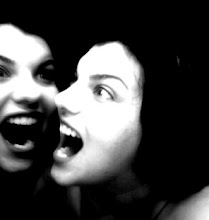Common Names: Bamboo shrimp, Asian Filter shrimp, Asian Fan shrimp, Asian Filter shrimp, Wood shrimp, etc.
Origin: Asia
Size: 8 to 12 cm (2.7 to 3.9 inches or larger)
Water Parameters: 6.5 to 7.5 pH
Temperature: 73*F to 82*F (tropical temperatures)
Feeding: Filters mirco-things in the water current and must be provided with a water current
Larval Development: Eggs hatch to larvae which go through several development stages before they are adults; Need full marine to brackish water for development; Will NOT develop in fresh water
Behavior: Non-aggressive
Difficulty: Easy
Quick History
This is one of my favorite shrimp species. Absolutely do NOT let anyone tell you differently, every shrimp you find in every pet store and online that are for sale are WILD caught. There is no known successful captive breeding at this time. There have been many shrimp
Water Parameters
Atyopsis moluccensis (Bamboo shrimp) are most comfortable if they are provided with a current and a perch for fanning/filtering their food. A good perch can be driftwood, rocks, or sturdy stem plants. To a bamboo shrimp, perch + strong current = heaven! When I had my colony of 14, I supplied them with plenty of branchy Malaysian driftwood and a powerhead, and they were happy and rarely moved from their spot. I should mention that because they are filter-feeders and when they have a comfortable spot, they will rarely move and because of this, they will have algae growing on their exoskeletons, and it's completely harmless to them. Bamboo shrimp are like the sloths of the shrimp family.
Breeding
As mentioned already, bamboo shrimp do not and will not breed in freshwater. They will mate, the females will carry eggs in freshwater, but once the eggs hatch, the larvae will need brackish to full marine water to develop. Again, do not let anyone tell you otherwise. There are many myths that there have been successful bamboo shrimp breeding in freshwater, so do not be fooled. There have also been many who have been very close to successful breeding, but sadly, it just hasn't been accomplished--yet. Hopefully, this will change in the near future.
Housing
A good size tank for bamboo shrimp is 20 gallons and up. Always be sure to provide a current and a perch for these shrimp. Warm, clean water is recommended. Avoid housing these extremely peaceful shrimp with fish that will harass them (cichilds, for example). Even though they are large and to some, may look aggressive, they are peaceful and will not harm the other inhabitants in the tank.
Feeding
Bamboo shrimp will thrive best in an aged tank because there are more micro-things and detritus for them to feed on. To supplement their diet, crushed or powdered spirulina or flake food can be added to the current. Bamboo shrimp can use their fans (which are basically modified, sticky chelae) to scrap the substrate for food, but this action should be avoided. If bamboo shrimp are doing this, it's a sign that there is not enough current, food in the current, and this should be resolved.
Sexing
Bamboo shrimp are easy to sex. The males' first set of walking legs are very large and pronounced, and their body size is larger than females. Females are generally smaller than males, and all sets of walking legs are about the same size as one another.
Coloration
Bamboo shrimp are usually a brown color. Healthy bamboo shrimp are a dark brown and light shades of brown create almost a striped color. Some will also display a bold, almost taupe stripe from head to tail. Some will be a reddish color. The paler the shrimp, the less happy they are. The more color they display, the happier they are.


1 comment:
Foiund your blog wihile trying to track down some info on how to breed. My female has eggs now- 22 days.
Please share info- what did you do and when? What went wrong? Feeding info- salt timeline? Any info will help.
You can comment on my blog
http://singaporewoodshrimp.blogspot.com/
or You Tube:
http://www.youtube.com/watch?v=ec9Vdmy2jGk
Post a Comment